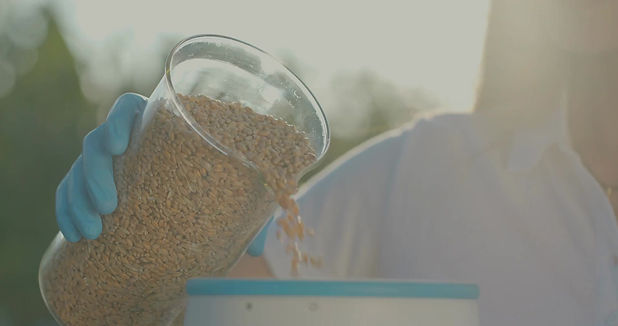

Peer-reviewed publications
Discover our Pioneering Contributions: Explore our collection of the most impactful, peer-reviewed publications that stand at the forefront of our field. Start your journey through our most influential contributions today and witness how our work is shaping the future
Computers and Electronics in Agriculture
Highlights
-
This study demonstrates a minimalist Bayesian dynamic crop modeling framework.
-
The framework enabled estimation of parameters and their uncertainties.
-
Inclusion of a water balance shifted parameter estimates.
Field Crops Research
Highlights
-
We propose a yield-protein plasticity framework to assess G × N interactions.
-
Yield associated with yield plasticity in high yield non-N limiting environments.
-
Yield plasticity was unrelated with grain protein.
-
Protein plasticity associated negatively with yield.
-
Harvest index associated with yield plasticity in high yielding environments.
Crop Science
Highlights
-
High-input management reduced wheat yield gap and improved milling and baking attributes.
-
E was the largest driver of yield and milling and baking qualities, followed by M and lastly by G.
-
Fungicide application improved yield and grain characteristics related to milling (grain weight, test weight).
-
Higher N rates improved yield as well as flour and dough characteristics related to baking (protein, stability).
Highlights
-
Irrigated wheat yield reduced by 11%–22% due to above flag leaf and 32%–52% below flag leaf hail damage.
-
Hail early at flowering stage decreased yield by 50%–70% in the rainfed low yielding environment (LYE).
-
Hail late after flowering stage decreased yield by 20%–50% in rainfed LYE.
-
Hail damage was mainly dependent on the canopy position in irrigated wheat.
-
Hail damage was mainly dependent on growth stage in rainfed wheat at LYE.
Highlights
-
Crop rotations outyielded continuous cropping, with a greater advantage in no-till systems.
-
Yield performance and stability of no-till decreased under continuous cropping.
-
Soybeans following wheat or sorghum outyielded continuous crop in low- and high-yield environments, respectively.
-
Continuous no-till wheat had the greatest yield penalty among the three crops evaluated.
-
Soil organic carbon increased over time with no-till but did not change with conventional tillage.
Highlights
-
Wheat water-limited wheat yield (Yw) in the southern Great Plains averages 5.2 Mg/ha.
-
Yw increases from 3.5 Mg/ha in the west to 6.5 Mg/hain the east.
-
Growing season water supply explains 82% of the Yw variability in the west.
-
Post-anthesis solar radiation explains 73% of the Yw variability in the east.
-
Maximum water productivity averages 17.2 kg/ha/mm.





